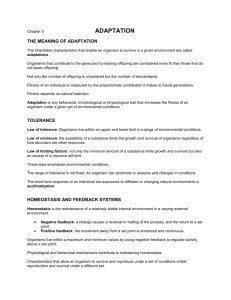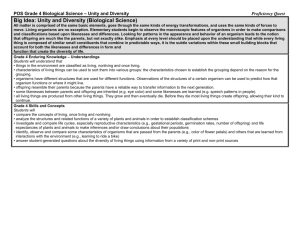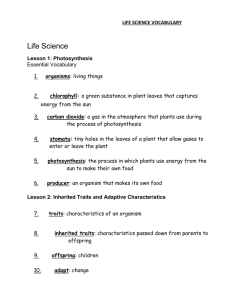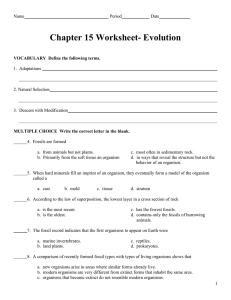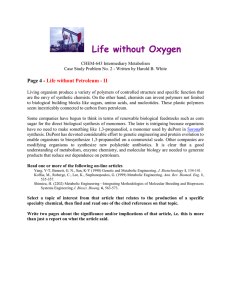Exam 3 Review
advertisement
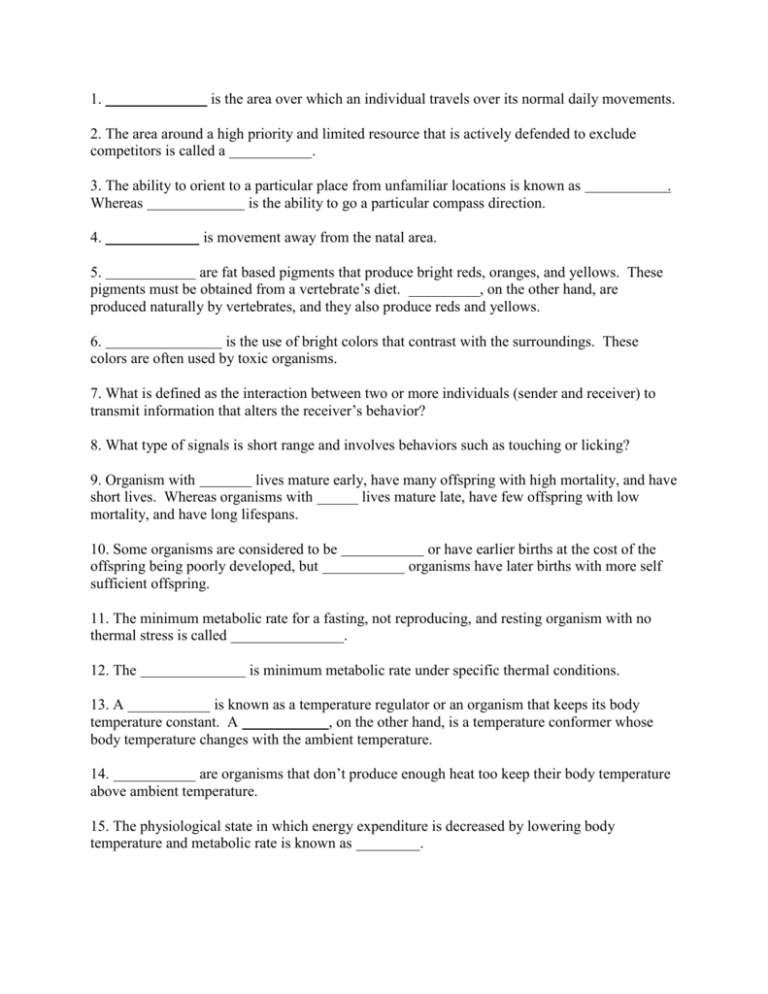
1. is the area over which an individual travels over its normal daily movements. 2. The area around a high priority and limited resource that is actively defended to exclude competitors is called a . 3. The ability to orient to a particular place from unfamiliar locations is known as Whereas is the ability to go a particular compass direction. 4. . is movement away from the natal area. 5. are fat based pigments that produce bright reds, oranges, and yellows. These pigments must be obtained from a vertebrate’s diet. , on the other hand, are produced naturally by vertebrates, and they also produce reds and yellows. 6. is the use of bright colors that contrast with the surroundings. These colors are often used by toxic organisms. 7. What is defined as the interaction between two or more individuals (sender and receiver) to transmit information that alters the receiver’s behavior? 8. What type of signals is short range and involves behaviors such as touching or licking? 9. Organism with lives mature early, have many offspring with high mortality, and have short lives. Whereas organisms with lives mature late, have few offspring with low mortality, and have long lifespans. 10. Some organisms are considered to be offspring being poorly developed, but sufficient offspring. or have earlier births at the cost of the organisms have later births with more self 11. The minimum metabolic rate for a fasting, not reproducing, and resting organism with no thermal stress is called . 12. The is minimum metabolic rate under specific thermal conditions. 13. A is known as a temperature regulator or an organism that keeps its body temperature constant. A , on the other hand, is a temperature conformer whose body temperature changes with the ambient temperature. 14. are organisms that don’t produce enough heat too keep their body temperature above ambient temperature. 15. The physiological state in which energy expenditure is decreased by lowering body temperature and metabolic rate is known as . 16. This type of seasonal torpor occurs in the winter and occurs in response to limited resources and cold temperatures. 17. What is the difference between a territory and a home range? 18. How are home ranges beneficial? 19. Discuss the differences between migration and dispersal. What are the benefits and costs associated with each? 20. Name and describe the three types of color change that occur in vertebrates. 21. Name and describe the three types of mimicry discussed in class. 22. Compare obligate and facultative reproductive strategies. 23. Describe how latitude affects an organism’s life history strategy. 24. Describe methods that some endothermic, aquatic organisms use to maintain homeothermic conditions. 25. Draw a Scholander curve and label the lower critical temperature, thermal neutral zone, and the upper critical temperature. 26. Why is hibernation discontinuous? What physiological changes occur during arousal periods, and how does size affect these periods? Are there any costs associated with these periodic awakenings? 27. What are structural adaptations that vertebrate groups have for feeding? 28. Describe the Optimal Foraging Theory. 29. Name and describe the 4 types of cryptic coloration discussed in class.






